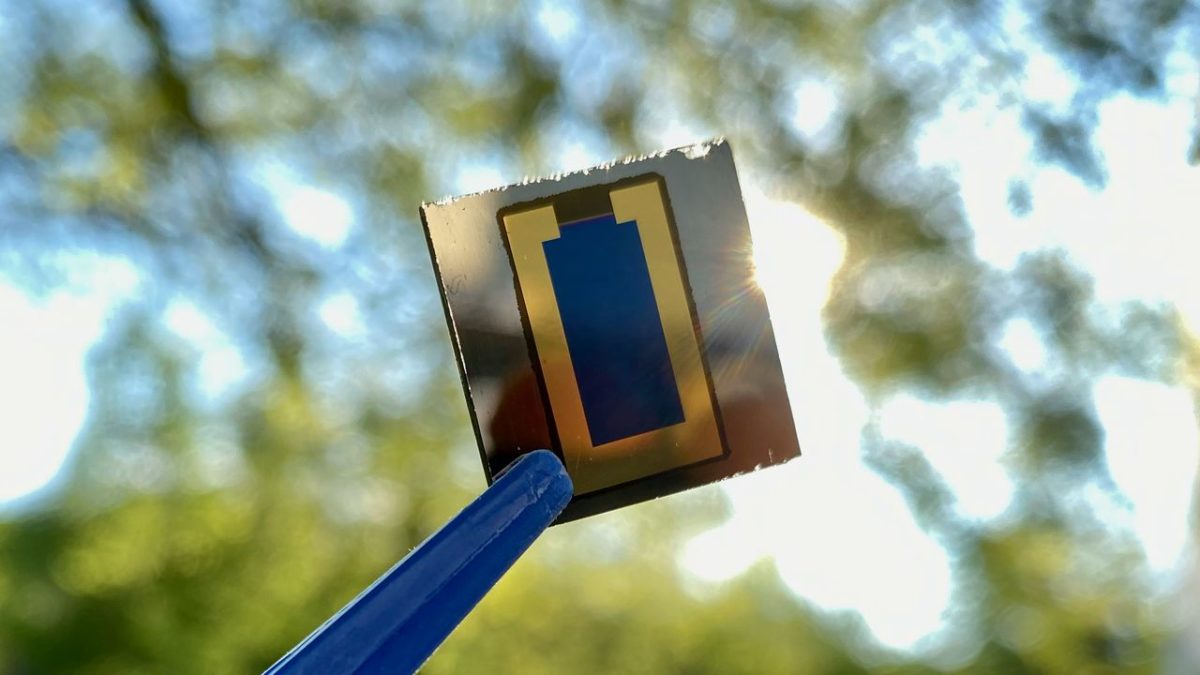Researchers at the Karlsruhe Institute of Technology (KIT) and the Netherlands Organisation for Applied Scientific Research (TNO) have developed a two-terminal tandem solar cell based on perovskite and copper/indium/selenium (CIS) thin-film.
They described the cell as the first of its kind to achieve efficiencies close to 25%, while also being able to match current generation in the top and bottom cells.
“High efficiencies are possible when the band gaps of the bottom and top absorbers are varied within a certain range, with absolute optimal values at 0.94 eV for the bottom cell and ca. 1.60 eV for the top cell,” they said. “Critically, the band gap of CI(G)S can be reduced to close to 1 eV by drastically decreasing the gallium content in the composition of the material in a graded fashion along the layer.”
The scientists used CIS with a bandgap of around 1.03 eV with a low amount of gallium, and triple-cation perovskite with a bandgap of around 1.59 eV. They used an antireflective coating (ARC) to improve the light in-coupling and increase the overall photocurrent. The cell had a power conversion efficiency of 24.9%, an open-circuit voltage of 1.57 V, a short-circuit current of 21.1 mA cm–2, and a fill factor of 75.2%. The integrated photocurrents of the top and bottom cells were 20.4 mA cm–2 and 20.7 mA cm–2, respectively.
The CalLab of the Fraunhofer Institute for Solar Energy Systems (Fraunhofer ISE) has confirmed that the cell has an efficiency of 23.5%, an open-circuit voltage of 1.59 V, a short-circuit current of 19.4 mA cm–2, and a fill factor of 75.5%.
“The high performance of our two-terminal cell is a result of the high quality of the subcells, as was apparent from independent current density-voltage curves and external quantum efficiencies (EQEs) of perovskite and CIS single-junction devices, as well as an appropriate optical and electrical coupling.” the researchers said.
They described the device “Monolithic Two-Terminal Perovskite/CIS Tandem Solar Cells with Efficiency Approaching 25%,” which was recently published in ACS Energy Letters.
“Our results demonstrate the potential of perovskite/CIS TSCs as a key energy solution, in particular for applications that might require flexible and/or lightweight PV devices, and open the way for future developments that may push the performances over the 30% threshold,” the scientists said.
*The article was updated on July 7 to reflect that the research group also comprises scientists from the TNO.
This content is protected by copyright and may not be reused. If you want to cooperate with us and would like to reuse some of our content, please contact: editors@pv-magazine.com.




2 comments
By submitting this form you agree to pv magazine using your data for the purposes of publishing your comment.
Your personal data will only be disclosed or otherwise transmitted to third parties for the purposes of spam filtering or if this is necessary for technical maintenance of the website. Any other transfer to third parties will not take place unless this is justified on the basis of applicable data protection regulations or if pv magazine is legally obliged to do so.
You may revoke this consent at any time with effect for the future, in which case your personal data will be deleted immediately. Otherwise, your data will be deleted if pv magazine has processed your request or the purpose of data storage is fulfilled.
Further information on data privacy can be found in our Data Protection Policy.